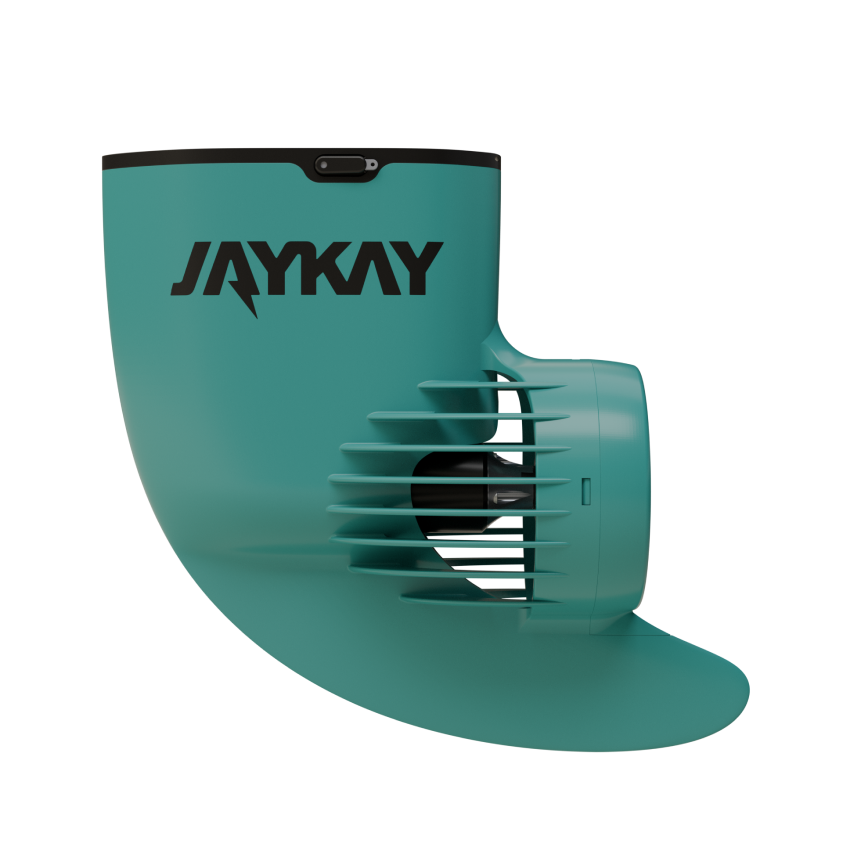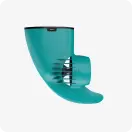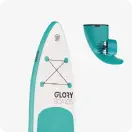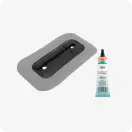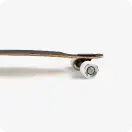Which SUP board is right for me?

Choosing the right SUP depends on your individual needs and preferences. Depending on whether you want to be fast and sporty on the road, or prefer to paddle slowly and comfortably. Whether you have a lot of space for storage or prefer to choose an inflatable iSUP, which is easier to store.
We've put together a few factors that can help you choose your SUP:
Board Shape/Shape:
The most common board shapes are the Allround, Yoga, Touring and Racing board:
Allround board
The classic all-round board has evolved from the surfboard and still has the shape of a Malibu longboard today. Es has a wide nose, a width of 28-31" and a flat underwater hull. The length varies between 9'8 - 11'6. es also offers longer all-round SUP boards for heavier riders. With this type of board, you can easily go on short tours, paddle in flat water and waves and even do some decent surfing. Es can do everything except "race", but has no particular focus.
This board shape is particularly suitable in the start-up phase, when you want to keep all disciplines open or test everything out a little bit without particularly high sporting demands.
In practice, es has developed in such a way that most paddlers already know that they don't want to ride waves and opt directly for an all-round shape. In fact, many keep this board because they don't want to do without its versatility.
In our store we offer our much tested 11'0'' Allround iSUP from Glory Boards at an affordable package price with our e-Fin. The Glory Boards "Cross" is perfect as a SUP board for families, as es is suitable for leisurely paddling on the lake as well as for paddling in pairs. Es is the ideal SUP board for paddlers looking for an all-round board with touring "genes". Thanks to the slightly wider tail, this board has enough stability that es is also suitable for beginners without restrictions. The pointed nose splits the water better, which means you will be faster than with a normal all-round SUP board. A kickpad is attached at the back, allowing you to make quick turns. Another great extension option is the included seat, which can be used to easily turn the board into a kayak.
Yoga Board
Balance is the most important criterion when you are looking for a SUP for yoga. Therefore, look for a strong stability and tilt resistance. The shape with rounded nose and tail and the wider design ensure a good water position and balance of the SUP. Most of the time, the carrying handles are on the outer edges so that they don't interfere with your exercises on the deck pad.
Touring Board
The pure touring boards differ in shape and form in that they are slightly longer and narrower than all-round boards. As a result, they are superior to the all-round board in directional stability, speed and glide. The resulting disadvantage due to the smaller width is the reduced tipping stability.
Race Board
Race boards are long and narrow. Lengths start at 12'6 for lighter riders, but usually range from 14′-16′ feet. Width varies from 22" (competition board) to 28" (freerace). Due to your lengths, edge shape and volume progression, they are difficult to turn, but in return you have excellent glide and excel at tracking. These boards are not suitable for beginners and occasional SUPers. They are rather aimed at competitors and sporty, ambitious, experienced paddlers.
Which board length suits me?
The size of the board depends on your height and weight. The taller and heavier you are, the bigger and sturdier the board should be to provide adequate stability and support. The following chart can help you choose:

Hardboards vs. inflatable boards (iSUPs):
SUPs can be made of different materials such as inflatable PVC or solid plastic. Both variants have advantages and disadvantages:
If you plan to travel a lot with your board, have a small apartment with limited space, or don't own a car, then an inflatable board with a transport backpack is just what you need! Another reason you might choose inflatable SUP is that they are generally lighter and easier to handle and carry.
Hardboards, on the other hand, are heavier, more unwieldy and even more susceptible to damage than inflatable SUP boards. A short contact with a stone or a paddle blade that touches the board during the paddle pull can already leave unsightly scratches or scratches on the hardboard. The inflatable SUP can easily cope with this! For this reason, only inflatable SUP boards are used for SUP tours on rivers. Hardboards would be damaged too quickly in white water.
Another disadvantage of hardboards is the greater risk of injury. If you fall, you'll hit hard material. Inflatable SUP boards, despite their stiffness, are still "softer" in case of falls. This advantage has been especially proven with yoga iSUPs, which are much more comfortable during yoga exercises than hardboards due to their soft material properties.
The only downside to iSUPs is that they don't perform quite as well in choppy conditions and wind. So consider the waters you expect to paddle on and whether you would take to the water in wind speeds of 10 to 15 knots.
A TOURING Double Chamber would be a good alternative for this, as es is stiffer, feels more like a hardboard on the water and is easier to paddle against the wind.
We hope that this article will help you to find a suitable SUP board for you. If you still have questions, please feel free to send us an email or contact a specialized sports store directly.
